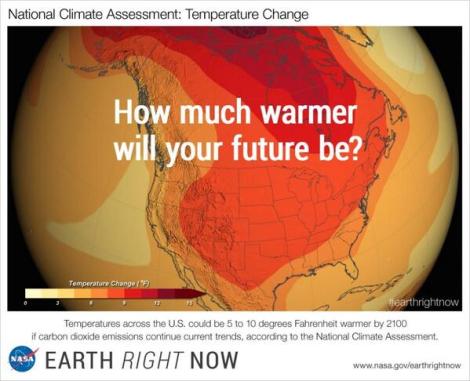
What’s next? What can I do? Those are questions you might be pondering if you tuned into Years of Living Dangerously on Showtime this weekend, or if you’ve been watching online clips from the “Preacher’s Daughter” story that was featured on Sunday night. In the episode, actor Ian Somerhalder follows Anna Jane Joyner, a young woman trying to persuade her evangelical pastor father that climate disruption is real, while she is also a full-time climate activist and one of the real-life heroes working with me and thousands more to move beyond coal.
I watched the episode with my family, and the next evening we sat around the dining room table talking about how to translate the urgency of the climate crisis to evangelicals skeptical of science. My mother-in-law is a retired minister and my husband is a scientist, so it was a great discussion, and I imagine Anna Jane’s story sparked many conversations just like it at kitchen tables around the country.
For everyone out there who has been having those conversations, let me bring you up to speed on what’s happened since the episode was filmed, and how you can help me, Ian, Anna Jane, and thousands more move America beyond coal. Around the nation, we keep on winning. Just last week, we announced coal plant retirement #165, when we won our campaign to retire the Reid Gardner plant in Nevada. Even better, the utility announced it will replace much of the power from the plant with a massive solar project.
In Asheville, the campaign featured in the Years episode, Duke Energy has announced for the first time that they’re considering retiring the Asheville coal plant. The announcement comes in the wake of a horrific spill of toxic coal ash from a retired power plant that devastated over 70 miles of the Dan River flowing through North Carolina and Virginia. The public outcry that followed has sent shockwaves all the way to the governor’s mansion. I helped lead a protest outside Duke headquarters a few weeks ago, and last week activists rallied at Duke’s annual shareholder meeting, calling for the retirement of the Asheville plant and the cleanup of not only the Dan River spill, but all of Duke’s coal ash sites in the state.
Meanwhile, Ian Somerhalder and his Ian Somerhalder Foundation have rallied people around the world through their #coalsucks social media campaign. The intentionally edgy and provocative hashtag is opening the eyes of millions to the threat of coal pollution and the urgency of moving to clean energy.
All this momentum comes just as more climate alarm bells are ringing. Today, a national committee of experts in agriculture, climate science, commerce, and disaster relief released the National Climate Assessment. The report is the nation’s foremost comprehensive, peer-reviewed analysis of the impacts of climate disruption, showing us the effects of climate disruption across the country.
The headline – the U.S. is already being seriously affected by climate change. As you might guess, the assessment shows the significant toll on our health and wallets that extreme weather is already exacting across the U.S. Here are just a few findings from the report that stood out to me:
- The most recent decade was the nation’s and the world’s hottest on record, and 2012 was the hottest year on record in the continental United States.
- U.S. average temperature has increased by 1.3°F to 1.9°F since 1895, and most of this increase has occurred since 1970. Temperatures are projected to rise another 2°F to 4°F in most areas of the United States over the next few decades.
- Evidence indicates that the human influence on climate has already roughly doubled the probability of extreme heat events such as the record-breaking summer heat experienced in 2011 in Texas and Oklahoma. The incidence of record-breaking high temperatures is projected to rise.
- The stakes are high, as nearly five million Americans and hundreds of billions of dollars of property are located in areas that are less than four feet above the local high-tide level.
- Climate change affects human health in many ways. For example, increasingly frequent and intense heat events lead to more heat-related illnesses and deaths and, over time, worsen drought and wildfire risks, and intensify air pollution.
- Certain groups of people are more vulnerable to the range of climate change related health impacts, including the elderly, children, the poor, and the sick.
More than 240 authors from across the country with diverse expertise helped create the National Climate Assessment, and this is especially disturbing – the findings are considered conservative estimates of the effects of climate disruption.
The report is also very clear about this – the effects will only grow worse if we fail to curb carbon pollution, the main culprit behind climate disruption. The assessment lets us know that it’s not too late to act, but we must do it now if we want to stop the worst of the expected climate disruption. You can weigh in right now and support EPA’s efforts to tackle our biggest source of climate pollution – coal-fired power plants. Just click here to take action.
We can choose to stop living dangerously by moving beyond coal, doubling down on clean energy, and holding our leaders accountable. We need your help. Join us.



